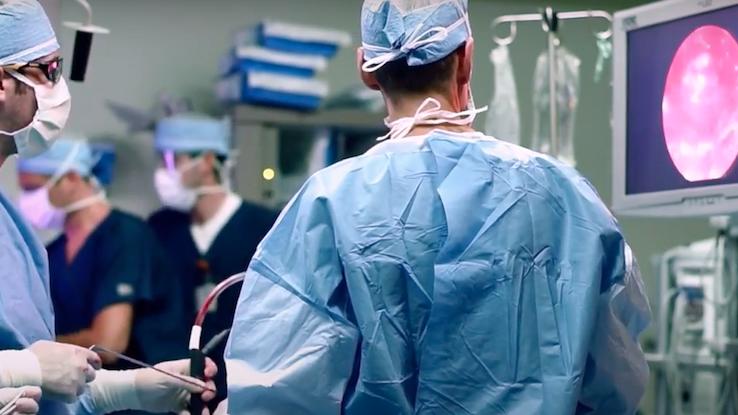How To Clear Lungs Cough

If you have a lung injury or illness, your doctor may tell you you need to have lung surgery as part of your treatment. If you're getting ready to have lung surgery or know someone who is, understanding what the different procedures involve can help you feel better prepared and more relaxed as you plan for the operation. Learn the basics of lung surgery with this quick guide.
Lung surgery is a treatment procedure that's done with the goal of removing or repairing the tissues in your lungs. There's a variety of common reasons why people undergo lung surgery, such as to remove blood or blood clots; to prevent a collapsed lung, which can happen due to injury or infection; to prevent fluid from building up in the lungs and to treat a condition like lung cancer or an infection. The type of treatment and the treatment outcome you need will determine the type of surgery you have.
Just as there are various reasons for having lung surgery, there are also different types of surgical procedures people commonly have performed on their lungs. If you have a lung tumor or your doctor suspects you may have lung cancer, you may have a procedure done that's called a biopsy. This involves taking a small sample of tissue from your lung (or a tumor inside it) that your doctor performs tests on to provide a diagnosis.
If your physician does diagnose you with lung cancer or you have an infection or other damage to your lung, you may have a surgery called a lobectomy. In total, your lungs have five different sections called lobes, and this surgery removes one or two of the lobes to also remove the injured area of your lung. If there's only a small area of damage to your lung, you may have a wedge resection instead. This surgery removes a small section of lung tissue instead of an entire lobe.
If you have more extensive damage to one of your lungs, you may need a surgery called a pneumonectomy. During this procedure, a surgeon removes your entire lung. This is a more invasive surgery with a longer recovery time. You may also have a lung transplant, which involves removing a diseased lung and replacing it with a healthy lung from a donor.
What Happens During Lung Surgery?
Doctors perform lung surgery under general anesthesia, meaning you won't be awake for the procedure or feel anything during it. Depending on the type of surgery you need, you may have an open procedure or a video-assisted one. During open surgery, the doctor makes an incision in your chest to access your lung between two of your rib bones. Once they have access to your affected lung, the doctor uses a special tube to remove all the air from the organ. This makes it easier for the surgeon to operate on your lung. The doctor then performs the operation on your lung and closes the incision back up with stitches. You'll likely have a few small drainage tubes coming out of your body and into a small tub to keep fluids from building up after the operation. The surgeon will remove these at a later date.
If the doctor doesn't need to access a large portion of your lung or you're having a quicker procedure like a biopsy, you may have video-assisted thoracoscopic surgery (VATS) instead. During VATS, the surgeon makes a few small incisions in your chest instead of one much larger one. The doctor then inserts a tiny camera on a long, thin tube through one of the incisions and accesses your lung using tiny instruments inserted through the other incisions. The doctor performs the surgery while watching a monitor to which the small camera is transmitting live video footage of your lung. When the surgery is complete, your surgeon stitches up the small incisions. As with open surgery, you'll have drainage tubes placed. Because VATS is typically less invasive than open surgery, however, recovery times can be shorter and less painful.
Recovering From Lung Surgery
Your recovery process depends on the type of surgery you had. If you had open surgery, you may spend a week or so in the hospital so doctors and nurses can monitor your progress and make sure you're healing properly. After VATS, your hospital stay may be as short as one or two days. You'll likely still have your drainage tubes in when you're discharged from the hospital.
Because the surgery involved your chest, your doctor may advise you not to attempt certain activities, such as driving, lifting things or engaging in most movements that involve pushing or pulling. Following open surgery, you may need to wait up to two months before doing these activities. The wait time following VATS is shorter — typically around two weeks or so, but your doctor may advise differently. It's essential to follow your surgeon's recovery instructions to ensure proper healing.
With both types of surgery, you'll have incisions and drainage ports that you'll need to clean on a daily basis. You'll also need to be careful when bathing so you don't irritate the incisions or disturb any dressings covering your wounds. You can expect your doctor to remove your stitches or staples one to two weeks after your surgery. When you're ready for discharging, your doctor may send you home from the hospital with a breathing device called a spirometer. Be sure to use it several times a day; it helps you take deep breaths to keep your lungs working well while they heal.
Resource Links:
https://medlineplus.gov/ency/article/002956.htm
https://www.cancer.org/cancer/lung-cancer/treating-non-small-cell/surgery.html
https://medlineplus.gov/ency/patientinstructions/000242.htm
https://www.nationaljewish.org/conditions/tests-procedures/adult-surgery-procedures/lung-surgery
https://www.lung.org/lung-health-diseases/lung-procedures-and-tests/lobectomy
https://www.hopkinsmedicine.org/health/treatment-tests-and-therapies/pneumonectomy
MORE FROM SYMPTOMFIND.COM
How To Clear Lungs Cough
Source: https://www.symptomfind.com/health/what-are-basics-lung-surgery?utm_content=params%3Ao%3D740013%26ad%3DdirN%26qo%3DserpIndex
Posted by: walstonlond1985.blogspot.com

0 Response to "How To Clear Lungs Cough"
Post a Comment